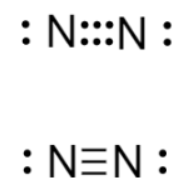Which of the following best describes veins?
A. thick walled, small lumens, low pressure, lack valves
B. thin walled, large lumens, low pressure, have valves
C. thin walled, small lumens, high pressure, have valves
D. thick walled, large lumens, high pressure, lack valves
For those aiming to excel in their ATI TEAS test and secure admission into their desired nursing program, ExamGates offers an invaluable resource. Our platform features practice questions meticulously crafted by tutors who have previously aced the exam themselves. With ExamGates, you can access content that is 100% relevant to the test, accompanied by vivid images and illustrations. Additionally, our platform provides comprehensive explanations for both correct and incorrect answers, empowering you to fully grasp the material and optimize your study efforts. Take the first step towards your nursing aspirations with ExamGates today.
Therefore, the Correct Answer is B.
More Questions on Custom TEAS Science Practice Test 1
Question 1:
Nitrogen gas is an extremely stable molecule because its structure contains which of the following?
A. Resonance bonds
B. Ionic bonds
C. Triple covalent bonds
D. Hydrogen bonds
The Correct Answer is C.The Lewis structure of nitrogen gas is shown below. Triple bonds are stronger than double or single bonds. Therefore, we can infer that the triple bond between the two nitrogen atoms makes nitrogen gas more stable.

Question 2:
Which of the following best describes veins?
A. thick walled, small lumens, low pressure, lack valves
B. thin walled, large lumens, low pressure, have valves
C. thin walled, small lumens, high pressure, have valves
D. thick walled, large lumens, high pressure, lack valves
The Correct Answer is B.Question 3:
In a plant in which fuzzy leaves (F) are dominant over smooth leaves (f), which of the following crosses will produce only offspring with smooth leaves?
A. Ff x ff
B. Ff x Ff
C. FF x FF
D. ff x ff
The Correct Answer is D.Crossing is the breeding of parents to produce an offspring. Given that f is a recessive allele of smooth leaves while F is the dominant allele of fuzzy leaves. Therefore, where there is F crossing with f, the offspring will have fuzzy leaves over smooth one.
Therefore, for an offspring to have smooth leaves, ff and ff must cross to produce an offspring with smooth leaves.
Question 4:
Which of the following sequences on a DNA molecule would be complementary to GCTTATAT?
A. TAGGCGCG
B. ATCCGCGC
C. CGAATATA
D. TGCCTCTC
The Correct Answer is C.Question 5:
The Life Cycle of HIV
Which of the following allows the AIDS virus, which contains RNA, to insert viral DNA into the DNA of a host T-cell after the AIDS virus enters the cell?
A. Receptor proteins located on the surface of the virus
B. The protein that makes up the capsid of the virus
C. Reverse transcriptase, an enzyme encoded by the virus
D. The phospholipids found on the envelope of the virus
The Correct Answer is C.The AIDS virus (HIV virus) is Class VI or Group VI in the Baltimore Classification. Based on the Baltimore Classification, this specifically involves the reverse transcriptase enzyme and it is encoded by the virus.
This is the enzyme that will produce DNA molecules from the viral RNA. This is the mechanism involved where it will use the reverse transcriptase enzyme to insert viral DNA into the genetic material of the host cell.
Question 6:
Base your answer on the graph and on your knowledge of biology. Which is a true statement about the relationship between pH and enzyme action?
A. All enzymes work best at a neutral pH.
B. Adding more acid does not affect the rate of activity of an enzyme.
C. Enzymes function only in a pH range of 4.0 to 5.5.
D. The activity of an enzyme is affected by pH.
The Correct Answer is D.Question 7:
Building blocks of proteins
Which of the following organic molecules contain both an amine and carboxyl group?
A. Lipids
B. Proteins
C. Cellulose
D. Chitin
The Correct Answer is B.The basic building block of the protein is ammonia, which comprises of ammino group -NH2 and a carboxyl group, -COOH.
Question 8:
Which of the following indicates the function of sodium bicarbonate released by the pancreas?
A. Sodium bicarbonate inhibits peristalsis
B. Sodium bicarbonate is a protease that digests carbohydrates
C. Sodium bicarbonate stimulates the pyloric sphincter
D. Sodium bicarbonate neutralizes the acidity of chyme
The Correct Answer is D.Sodium bicarbonate is an alkaline solution, which is released by the pancreas. Chyme is acidic coming from the stomach is neutralized by sodium bicarbonate to protect the duodenum.
Question 9:
Which of Mendel's laws or principles states that gametes carry one allele for each trait?
A. law of segregation
B. independent assortment
C. gene segregation
D. phenotype assortment
The Correct Answer is A.Question 10:
Which of the following are used to determine a person’s DNA sequence?
A. Genes
B. Enzymes
C. Hormones
D. Blood types
The Correct Answer is A.A gene is the basic physical and functional unit of heredity and it is the DNA that make up genes. Enzymes are biological catalysts that speed up metabolic and cellular reactions in our bodies. Hormones are responsible for controlling the action of certain cells or organs in our bodies. Blood types are of four types, A, B, AB, and O.